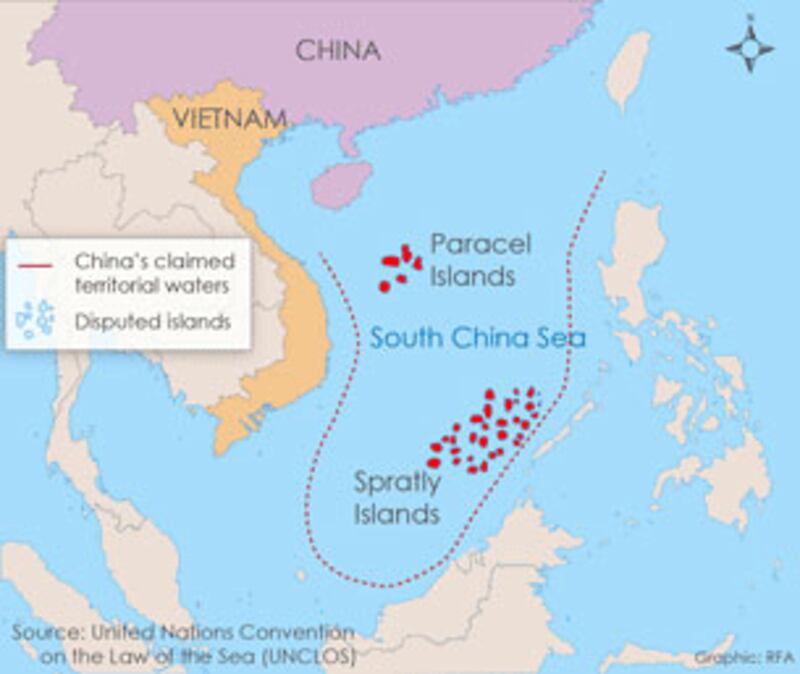Amid rising tensions with the Philippines, China on Friday ordered a patrol ship to a disputed island in the South China Sea, to "protect the interests" of its fishing crews following a naval standoff earlier this week.
"Yuzheng 310 is now on its way to the South China Sea. It's charged with safeguarding Chinese fishermen's interests in the area," the official news agency Xinhua reported.
The vessel will join two Chinese surveillance vessels already in the vicinity of the disputed area, which is marked as the Scarborough Shoal on international maritime charts. A Philippine Coast Guard patrol ship, P Edsa Dos, is also anchored nearby.
China reiterated its sovereignty over the area it calls Huangyan Island, called Panatag by Manila, which says the disputed area is within its economic exclusion zone and that it plans to take the matter to an international tribunal.
Beijing ordered the Yuzheng 310, which has already seen service protecting Chinese interests in the Diaoyu, or Senkaku, island chain at the center of a dispute with Japan, to protect its fishing boats "after Manila refused to withdraw its vessels from China's territorial waters," Xinhua said.
Chinese foreign ministry spokesman Liu Weimin defended Beijing's move on Friday. "The U.N. Convention on the Law of the Sea allows coastal nations to establish a 200 nautical mile exclusive economic zone," he told a regular news briefing.
"But that doesn't give any nation the right to encroach upon other nations' sovereignty," Liu said, calling on Manila to "work with us to ease tension."
Competing claims

But Manila slammed the move as an escalation of tensions between the two countries, which began on April 10 after two Chinese maritime surveillance ships prevented a Philippine warship from arresting several Chinese fishermen, who then left the area, to the annoyance of Philippines officials.
The South China Sea is home to potentially resource-rich island chains and some of the busiest shipping lanes in the world. It is the object of a number of competing territorial claims.
The dispute has prompted a flurry of nationalistic sentiment among China's netizens, with many anxious to see China defend its territorial claims with military force.
"If we're going to fight, we had better start now," wrote user @didaowanzhu on the popular microblogging platform Sina Weibo. "The longer we leave it, the more problems will occur."
@tiandaochouqin-houdezaiwu777 called for China to invest more in a high-tech navy. "We should improve the development of the navy and of a high-tech military," the user wrote.
But user @WU_chunzhi_weibodaren replied: "That will only work if we are really prepared to fight!"
"The navy has been permitting encroachment on its own maritime territory for such a long time; it's truly incredible," added @shuzhufuzui.
Website hacked
Meanwhile, hackers identifying themselves as Chinese attacked the University of the Philippines' website Friday, replacing the university's homepage with a map of the Scarborough Shoal labeled in Chinese.
"We come from China. Huangyan Island is ours," read a message at the top of the page.
The website remained out of action at 11.30 a.m. GMT on Friday, with a notice saying it was "currently undergoing maintenance."
The Philippines foreign ministry has said it will bring the dispute unilaterally to the International Tribunal on the Laws of the Sea.
China has underlined its "indisputable sovereignty" over the South China Sea, saying its claims stretch back at least to the 1930s, when official maps from Beijing contained the whole sea as Chinese territory.
China has rejected calls by ASEAN states, including the Philippines, for arbitration by the U.N. tribunal, which is an independent judicial body set up by the Convention of the Law of the Sea, the global legislation covering all maritime territorial disputes.
It has also unveiled a map showing a U-shaped dotted line extending from China and enclosing virtually the entire South China Sea while hugging the coastline of Vietnam, Malaysia, Brunei, and the Philippines.
Reported by Luisetta Mudie.
